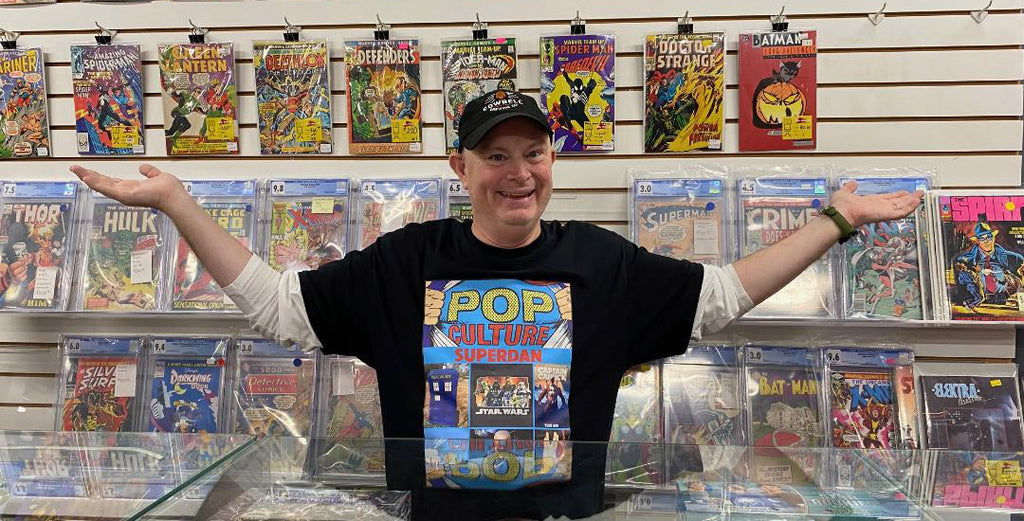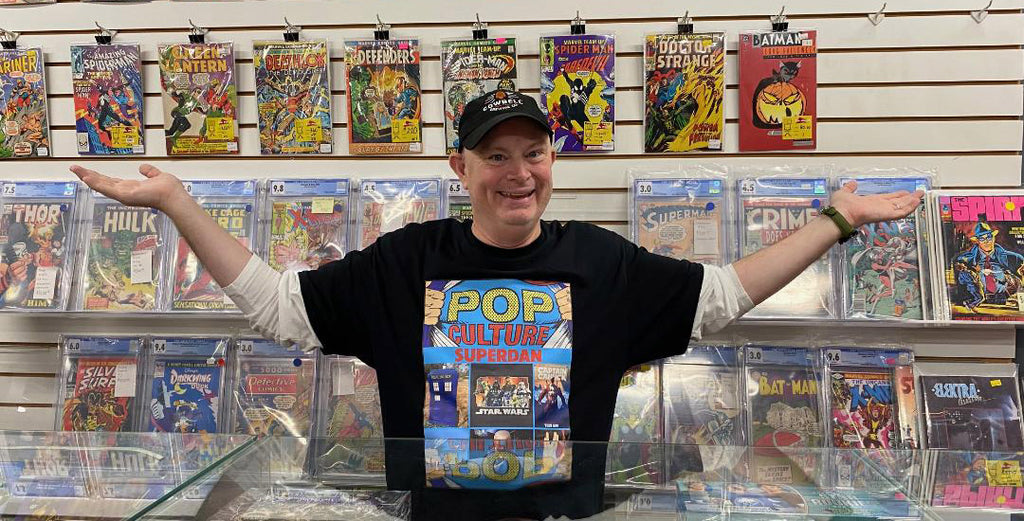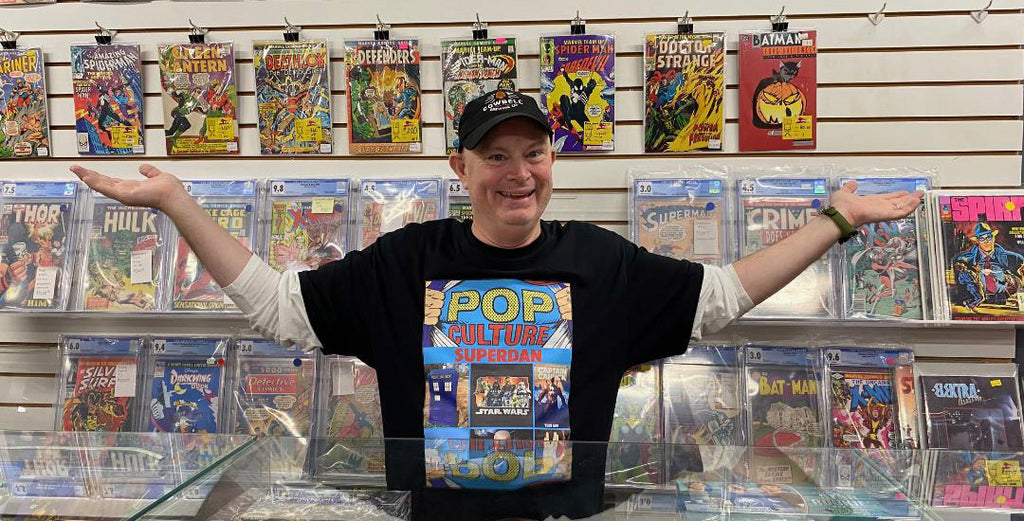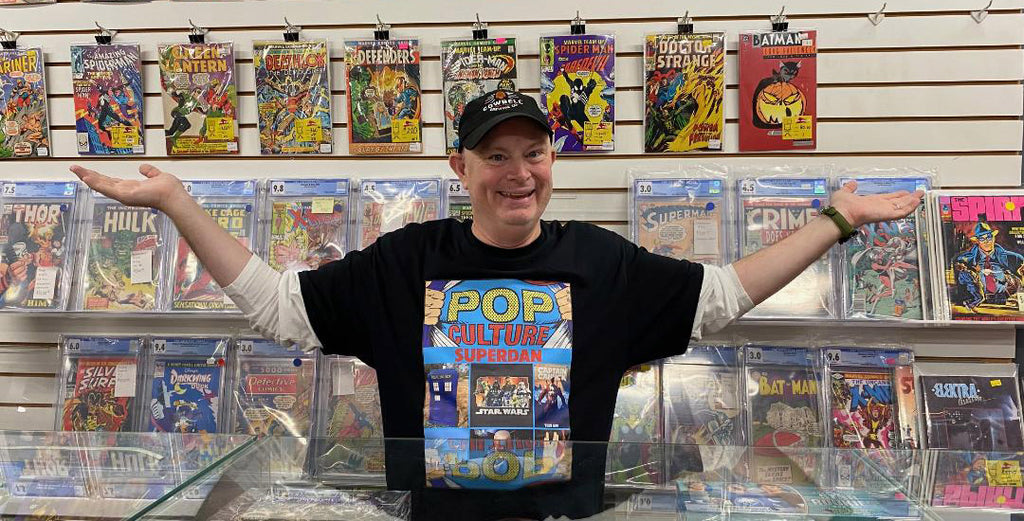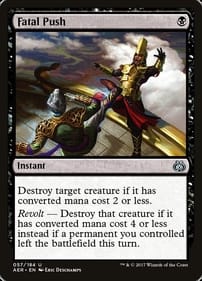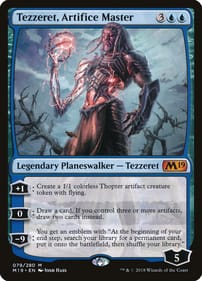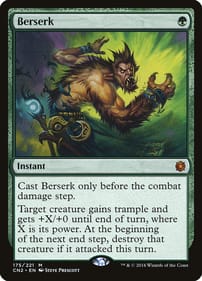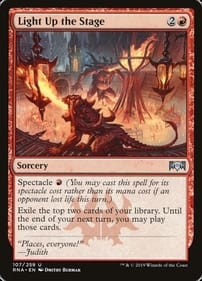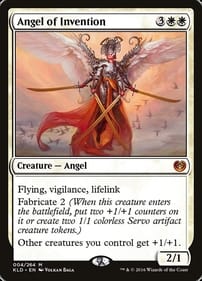Let’s Stop This Comic Trend While We Still Can
By Dan BrownIt started, as far as I can tell, with Watchmen back in 1986.And it ends now, if I have anything to say about it..What am I on about?I’m not even sure what the correct term is. Some call it “back matter,” others say “supplemental material.”I’m referring to the several pages of prose that appeared in every issue of the landmark DC series back in the day. The same material was reproduced when all 12 Watchmen issues were collected into one volume and sold as a graphic novel.In Watchmen, it took the form of faux newspaper articles or documents or book excerpts that shed light on the rest of the story and the characters in it. Alan Moore came up with the stuff when DC was unable to sell ads in the individual issues of what was then an experiment in more mature storytelling.I don’t honestly know how many other comics have used the same device. I have noticed that at least one other series – the alien-invasion tale Wild’s End by Dan Abnett and I.N.J. Culbard – features the same kind of afterword section. I recently read the collected Wild’s End for L.A. Mood’s graphic-novel group, it was one of the books we covered this summer. And each chapter ends with supplementary material.In individual Wild’s End issues, which started appearing in 2015, the back matter takes up as many as five pages. The goal appears to be the same as with Watchmen — to give readers pertinent information in a way that adds context and shading to the story told in comic panels in the front of the book.Maybe you’ve read comics with the same device. I know there is a vast audience out there of comic enthusiasts who don’t even bother to read these pages, which are akin to the bonus material you get with a DVD.In the ideal case, these back pages would flesh out certain aspects of a given story, supplying readers with an even deeper reading experience. That’s fine, but what I fear is these prose epilogues will become the norm.I’m not opposed in every instance to non-comics material in my comics. I grew up reading Marvel Comics in the 1970s and at least two pages in every issue of, say, the Uncanny X-Men, were devoted to a letters column and Bullpen Bulletins. I loved that stuff, it was fun. Those pages made me feel like I was a part of the Marvel community at a time when there was no global communication device like the internet (you can imagine how crushed I felt to learn Stan Lee had made up reader letters in some early Marvel issues). But enough already.This is a pet peeve of mine I’m hoping comes to an end before other creators take it up and it becomes a full-on trend.For starters, five pages out of an individual issue is just a huge chunk of space. I know the justification is that certain aspects of a story are better told in text, but if you’re like me, you don’t like chocolate in your peanut butter. Prose already has a showcase, they’re called books.Taking five pages away from a powerful creative team is too much of a sacrifice. With five extra pages an issue, a creator like Jack Kirby could have launched whole new universes full of interesting characters, concepts and locations.And, frankly, those prose pages never have the same impact as the rest of a chapter or a specific single issue. Reading them feels like homework, frankly. At least it does to me.Also, they just reek of literary pretense. Comics don’t have to be more like books. They are a perfectly legit artform without text passages, so let’s nip this incipient trend in the bud.Creators, the work you do with drawings and word balloons is perfectly fine on its own. You don’t need a prose section at the back of your latest comic to give you credibility, comics are perfect the way they have always been presented.Disagree? I’d love to hear why in the comment box below!Dan Brown has covered pop culture for more than 31 years as a journalist and also moderates L.A. Mood’s monthly graphic-novel group.
Steal This Idea
Let's have a place where comic fans, comic creators and the professionals who study comics could all gather to share their love for the medium.
Read The StoryNo Better Alien Comic than the Original
By Dan BrownThere have been many comics based on the Alien film franchise, but there is none better than the original Alien: The Illustrated Story.Gorgeously and creepily drawn by legendary artist Walt Simonson and written by steady hand Archie Goodwin, no less an authority than Frank Miller said “it might just be the only successful movie adaptation ever done in comics.”Originally published by Heavy Metal, the book was re-issued by Titan Books in 2012 and is worth hunting down in the runup to the release of the latest chapter in the franchise, Alien: Romulus, landing in theatres on August 16.The Illustrated Story adapts the 1979 Ridley Scott film. I was 11 years old when that movie was released, so I couldn’t see it in theatres. This comic was one of the ways – along with the novelization and fan magazines – I came to understand what the fuss was about. Keep in mind, at the time there were stories of people going to see Alien and throwing up in the theatre because of the unsettling gore. Older kids told me Alien gave them weird dreams.Unlike other film adaptations, such as Marvel’s ongoing Star Wars title, Simonson was not legally prevented from drawing the characters as they looked on screen. So that level of detail adds to the comic’s impact.In addition, it was clear Simsonson and Goodwin had actually seen a cut of Alien before they attempted their adaptation. But the highest compliment I can pay the creative team is how they took what worked from the movie and translated it into terms that worked for a comic.For example, in the scene where the Nostromo crew cut into the face-hugger in the sick bay, Simonson uses a long, vertical panel to show how the creature’s acid blood drips through the different levels of the doomed vessel.Simsonon’s rough lines were also perfect for capturing the gritty feeling of Scott’s motion picture. When the adult extraterrestrial finally appears, it towers over the individual crew members as it attacks – a licence taken with the visuals from the film, where it appears only in glimpses until the end of the story.There’s also judicious use of splash pages, like the full-page panel that shows the chest-burster violently emerging from Kane’s body. It gets the point across: There was blood everywhere.Even better, in select panels Simsonon frames them with the same blend of organic and mechanical elements that Scott used to create such a creepy atmosphere on the big screen.You may be wondering, since the creators involved were both veteran Marvel hands, why was this book published by the adult Heavy Metal? After all, in the 1970s Marvel wasn’t shy about using the latest fad to boost the company’s sales. Why not try to jump on the Alien bandwagon?I’m guessing Stan Lee and company were afraid to come out with a comic that was so bloody and had adult language. In 1999 I interviewed Harry Dean Stanton, the actor who played Brett, and he told me Scott wanted his actors to sound like “space truckers,” not noble PG Jedi Knights with their “outer-space attitude.”For diehard Alien fans, there’s also a moment near the end of The Illustrated Story I have not seen discussed anywhere in supplementary books or commentary tracks.As Ripley runs toward the lifeboat, she encounters the xenomorph sitting in a hallway. It has wrapped itself up into its own body, kind of like how a cat sleeps in a ball, except it’s almost a perfect cube. Ripley watches in horror as it slowly unfolds into its regular form. Was this a scene from an earlier cut of the movie Simonson and Goodwin got to see? I have never seen it addressed anywhere else in Alien lore (although there is a deleted scene of Dallas and Brett suspended in an Alien cocoon begging Ripley to mercy-kill them, which she does with her flamethrower).Even though it’s set in the future, to read this adaptation is also to be transported into the past, specifically the 1970s. Diehard Alien fans will know that in the original film, the crew’s employer is only referred to as “the company.” This was later modified in sequels to be the Weyland-Yutani Corporation. But by having it as an unnamed entity, the film plays on the anti-corporate sentiment that was in the air back then in many 1970s paranoid thrillers. Alien did the unlikely. It took a cliched plot – hapless spaceship crew must respond to distress signal, then is slowly picked off by star beast that is actually a guy in a rubber suit, with audience never knowing who the next victim will be – and created something fresh out of those hackneyed elements.Alien: The Illustrated Story is also an unlikely success by virtue of being the comic version of a landmark film that is not only a faithful adaptation, but worth reading for its own sake as well.Oh, and for the record, it appears Marvel may have learned its lesson: There will be Alien: Romulus prequel one-shot coming out October 24 that depicts the events that set the plot of the new sequel in motion. Dan Brown has covered pop culture for more than 31 years as a journalist and also moderates L.A. Mood’s monthly graphic-novel group.
New Comic Collection to be Released In Store Saturday, July 13
This collection includes classic CGC graded and non-graded issues, first appearances, and more.
Read The StoryWhat Makes A Comic Run Legendary?
By Dan Brown When comic fans say they love a particular “run,” they’re not referring to shredded panty hose or uncomfortable bowel distress. No, they’re talking about long-running comic titles that have a prolonged period of creativity for a set number of issues under a certain creative team or individual comic creator. Are you a fan of a TV show that’s been around for a while? Are there maybe one or two seasons that stick out in your mind? Then you’ve got the idea of a legendary run in comics. This is why you’ll hear comic enthusiasts say something like, “I believe John Byrne’s run on The Fantastic Four is second only to Jack Kirby and Stan Lee’s time on the same series.” Runs are possible because some titles have been around for more years than I’ve been alive. For example, in the course of a series like Marvel’s The Amazing Spider-Man, which launched in 1963, a long list of writers and artists (not to mention inkers, colourists, letterers, and editors) have worked on the book over the decades, bringing the venerable web-slinger to life. Naturally, fans like how Spidey is handled more or less depending on who is doing the drawing and writing. And of course we fans also love to debate the merits of different runs. Steve Ditko did the art for the first 38 issues of Spider-Man and his run is considered foundational. But some modern fans prefer, say, when John Romita Jr. drew the title with J. Michael Straczynski scripting in the early 2000s. It’s all up to personal preference. Why are some runs so fruitful, such a riot of invention? Dunno. It’s up to comics alchemy. There are ongoing debates about why a particular partnership jells, setting the comic world on fire. But nobody knows exactly why a specific illustrator or writer is in the zone over a sustained period of time. So companies such as Marvel or DC can’t set out to launch a legendary run. It just happens. You might as well try to guess what the source of all creativity is.What I do know for sure is that in my long career as a comic fan, I’ve been blessed to witness many amazing runs. It was probably the partnership of John Byrne with Chris Claremont on The Uncanny X-Men back in the late 1970s and early 1980s that solidified my burgeoning love for comic books. The work they did together is still remembered fondly today, including the Dark Phoenix story arc. Those issues are beyond legendary, beloved by subsequent generations of comics fans – and the folks in Hollywood, who continue to plunder the duo’s ideas for fresh movie material. The pair launched a team of Canadian heroes, Alpha Flight, during their reign on X-Men. Byrne would later pencil and write the first 28 issues of that group’s own title, which I just finished re-reading in anthology form. Why was Byrne on the Alpha Flight series for only two years? Because that was enough to tell all the Alpha Flight stories he wanted to tell. The sometime Canadian then had a truncated run on The Incredible Hulk – it’s not clear to me why he didn’t do more than six issues of the rampaging creature’s adventures. It’s not like he didn’t have the staying power – as he proved when he did the creative duties on The Fantastic Four for a staggering six years. (It wasn’t until I read the early Kirby/Lee issues of Fantastic Four that I understood what Byrne was trying to accomplish with Mister Fantastic, the Invisible Woman, the Human Torch and the Thing. So sometimes a particular run will “echo” a previous one on purpose.) Other runs I love: Walt Simonson on Thor, David Mazzuchelli on Daredevil, George Perez and Marv Wolfman on The New Teen Titans, George Freeman on Captain Canuck, Michael Golden and Bill Mantlo on The Micronauts. The new wrinkle in modern publishing seems to be that the legendary runs are published as a series with a limited lifespan, such as Jeff Lemire’s 40-issue Sweet Tooth series, which was such a moving story (with a concrete ending) it made me cry. Or Mark Waid’s Irredeemable, which lasted a similar 37 issues. Those comics were not meant to go on endlessly. Perhaps today’s comics publishers realize sometimes less is more, and the concept of a superhero series that will grind on for years, eating up creative talent, has built-in limitations of its own. I mean, Byrne and Claremont had the audacious ambition to kill off Phoenix during their tenure on X-Men, a stunning move in 1980. But looking back, it feels like each subsequent creative team has sent her to the grave, too. I know that’s an exaggeration, but even a Phoenix can die only so many times before readers grow restless. Dan Brown has covered pop culture for more than 31 years as a journalist and also moderates L.A. Mood’s monthly graphic-novel group.
On Free Comic Book Day, Something For Everyone
I don’t know what kind of comics you like. But I can say this much with certainty: When you visit your favourite comic store on Free Comic Book Day (which lands on May 4) you will find a veritable horn o’plenty to pick from. That’s right. There’s something for everyone. It’s an old-fashioned cornucopia. Or maybe a comicopia? What I mean is, whatever publisher, fandom, character, creator, title you favour, you will find something to scratch that particular itch. I say this after getting a sneak peak of the bulk of the freebies that await you at stores like my preferred comics haunt, L.A. Mood Comics & Games. Fandoms like Star Wars, Stranger Things, Teenage Mutant Ninja Turtles, and Planet of the Apes are represented by offerings from publishing houses such as Marvel, Dark Horse, Titan, Fantagraphics, and IDW. Here are a few highlights from my reading to help inform your FCBD excursion:*For a sentimental old fool like me, the title that jumps out is Snoopy: Beagle Scout Adventures, a sampler with strips pulled from the collection of the same name landing in bookstores at the end of April. What ‘s better than Snoopy and Woodstock camping in the woods? Snoopy and a whole troop of little Woodstocks camping in the woods! *Marvel is putting on a big push on a couple fronts. One is this year’s companywide crossover, called Blood Hunt. The premise is that perpetual night has fallen on the Marvel Universe, which means it’s feasting time for vampires, including the hungriest bloodsucker of them all, Dracula. The other front is Marvel’s Voices line, which features characters and creators aimed at the queer, Indigenous and Latino communities. *The best cover may be the one on Tons of Strange, a child-friendly homage to the EC horror titles of the 1950s. Inside, you’ll find Jawas playing dice in the sands of Tatooine! *Speaking of the 1950s, Stories from the Atlas Comics Library includes a Stan Lee-penned piece in which the then-unknown creator took aim at Fredric Wertham. He’s the crank psychiatrist who provided the anti-comics crowd with pseudo-scientific cover for their crusade to ban comics, which included comic burnings, back in the day! *Also in the running for best cover is the one for Conan: Battle of the Black Stone, which features everyone’s favourite barbarian hefting a bloody axe. It comes from Heroic Signatures and Titan Comics. Is there a comics company out there that hasn’t published his adventures? The difference this time is the current licence holders are trying to situate Conan within a larger Robert E. Howard universe of characters. *Perhaps the broadest sampler pamphlet is the one featuring Asterix and Obelix, which includes episodes culled from seemingly every one of their books. Oh those wacky Gauls! *The Kill Shakespeare universe makes a return with Romeo Vs. Juliet, which imagines the star-crossed lovers crossing swords! How is this possible? It turns out Juliet faked her own death. No word in this promo pamphlet on how Romeo managed to shuffle back onto this mortal coil. *The Teenage Mutant Ninja Turtle handout includes a slice-of-life tale in which Master Splinter has a rare evening of quiet away from his adopted mutant sons. All I will say is that the rodent sensei doesn’t spend all his free time meditating!*The Cursed Library Prelude takes place in the Archie Horror world, so for those who prefer the dark side of Riverdale, prepare to meet Jinx, the daughter of Satan himself! It also features a snippet of a ghost story starring Archie’s favourite blond, Betty Cooper! So if you’re a fan of Venom, Flash Gordon, Johnny Quest, ThunderCats, Hellboy, Frankenstein’s wife or Mei-Mei the red panda, there’s something for you this FCBD. And that’s just the free comics . . . I hope you’ve been saving your shekels because the annual event is also a great excuse for London’s comic retailers to offer customers some outrageous deals!I love FCBD, dubbed Geek Christmas by some, for the feeling that’s in the air around town. It’s kind of like a moving fan convention as Forest City comic enthusiasts, cosplayers and pop-culture followers travel around our community, checking in at all the different stores. There’s a rare convergence this time as FCBD and May the Fourth (the day unofficially set aside to celebrate all things Star Wars) coincide, so there’s bound to be the waft of bantha steaks in the air. Don’t miss it! Dan Brown has covered pop culture for more than 31 years as a journalist and also moderates L.A. Mood’s monthly graphic-novel group.



